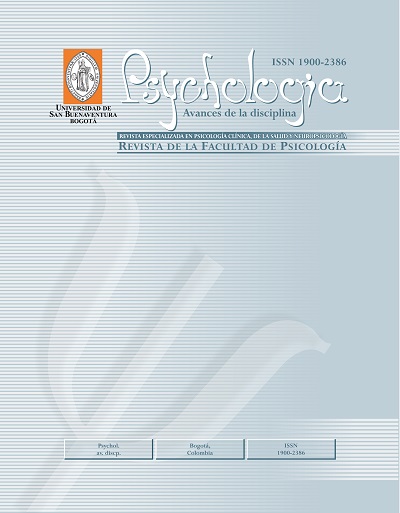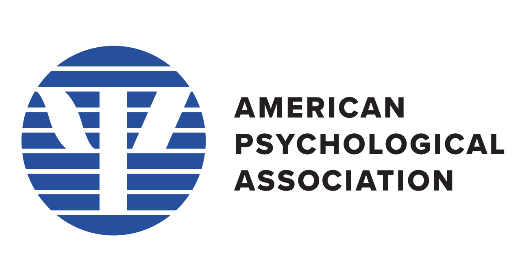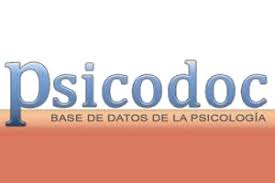Esta revista proporciona un acceso abierto inmediato a su contenido, basado en el principio de que ofrecer al público un acceso libre a las investigaciones ayuda a un mayor intercambio global de conocimiento.
Por tanto se acoge a la Licencia Creative Commons 4.0 Atribuciones Reconocimiento – NoComercial – CompartirIgual (by-nc-sa): No se permite un uso comercial de la obra original ni de las posibles obras derivadas, la distribución de las cuales se debe hacer con una licencia igual a la que regula la obra original.
http://creativecommons.org/licenses/by-nc-sa/4.0/
Resumen
Palabras clave:
Referencias
Agrawal, A., & Lynskey, M. T. (2008). ¿Are there genetic influences on addiction? Evidence from family, adoption, and twin Studies. Addiction, 103(7), 1069-1081.
Bale, T. L., & Vale, W.W. (2004). CRF and CRF receptors: role in stress resposivity and other behaviors. Annual Review of Pharmacoogy andl Toxicology, 44, 525-557.
Balogh, K. N., Mayes L. C., & Potenza, M. N. (2013). Risk-taking and decision-making in youth: relationships to addiction vulnerability. Journal of Behavioral Addictions, 2(1), 1-16. doi:10.1556/JBA.2.2013.1.1.
*Banerjee, N. (2014). Neurotransmitters in alcoholism: A review of neurobiological and genetic studies. Indian Journal of Human Genetics, 20(1), 20-31. doi:10.4103/0971-6866.132750
Bartholow, B., Fabiani, M., & Pearson, M. (2003). Effects of Alcohol Consumption and Alcohol Susceptibility on Cognition: a Psychophysiological Examination. Review of Biological Psychology, 64, 167-190.
Buisman-Pijilman, F., Sumracki, N.M., Gordon, J. J., Hull, P. R., Carter, C. S., & Tops, M. (2014). Individual differences underlying susceptibility to addiction: Role for the endogenous oxytocin system. Pharmacology, Biochemistry and Behavior, 119, 22-38.
*Caña, M.L., Michelini, Y., Acuña, I., & Godoy, J.C. (2015). Efectos de la impulsividad y el consumo de alcohol sobre la toma de decisiones en los adolescentes. Health and Addictions, 15(1), 55-66.
*Carballo, J. L., Marín, M., Jaúregui, V., García, G., Espada, J. P., Orgilés, M., & piqueras, J. A. (2013). Consumo excesivo de alcohol y rendimiento cognitivo en estudiantes de secundaria de la provincia de Alicante. Health and Addictions, 13(2), 157-163.
Chaplin, T.M., Sinha, R., Simmons, J., Healy, S .P., Mayes, L. D., Hommer, R. E., & Crowley, M. J. (2012). Parent-adolescent conflict interactions and adolescent alcohol use. Addictive Behaviors, 37, 605-612.
Cheung, A. M., Mitsis, E. M., & Halperin, J. M. (2004). The Relationship of Behavioral Inhibition to Executive Functions in Young Adults. Journal of Clinical and Experimental Neuropsychology, 26, 393-404.
Clark, L. (2010). Decision-making during gambling: an integration of cognitive and psychobiological approaches. Philosophical Transactions of the Royal Society B: Biological Sciences, 365(1538), 319-330. doi: 10.1098/rstb.2009.0147.
*Claus, E. D., Ewing, S. F., Filbey, F. M., Sabbineni, A., & Hutchison, K. E. (2011). Identifying Neurobiological Phenotypes Associated with Alcohol Use Disorder Severity. Neuropsychopharmacology, 36(10), 2086-2096. doi:10.1038/npp.2011.99
Clerkin, E.M. & Barnett, N. (2012). The separate and interactive effects of drinking motives and social anxiety symptoms in predicting drinking outcomes. Addictive Behaviors 37, 674-677.
*Coleman, L. G., He, J., Lee, J., Styner, M., & Crews, F.T. (2011). Adolescent binge drinking alters adult brain neurotransmitter gene expression, behavior, brain regional volumes, and neurochemistry in mice. Alcoholism: Clinical and Experimental Research, 35(4), 671-688. doi:10.1111/j.1530-0277.2010.01385.x
Crean, R. D., Tapert, S. F., Minassian, A., MacDonald, K., & Mason, B. J. (2012). Effects of Chronic, HeavyCannabis Use on Executive Functions. Journal of Addiction Medicine, 5(1), 9-15. doi: 10.1097/ADM.0b
Crego, A., Rodríguez, S., Parada, M., Mota, N., Corral, M., & Cadaveira, F. (2009). Binge drinking affects attentional and visual working memory processing in young university students. Alcoholism: Clinical and Experiental Research, 33(11), 1870-1879.
Cservenka, A., & Nagel, B. J. (2012). Risky decision-making: An fMRI study of youth at high risk for alcoholism. Alcoholism: Clinical and Experimental Research, 36(4), 604–615. doi:10.1111/j.1530-0277.2011.01650.x.
*Cui, C., Noronha, A., Morikawa, H., Alvarez, V. A., Stuber, G. D., Szumlinski, K. K., & Wilcox, M. V. (2013). New insights on neurobiological mechanisms underlying alcohol addiction. Neuropharmacology, 67, 223-232. doi:10.1016/j.neuropharm.2012.09.022
Cunha, P. J., & Novaes, M. A. (2004). Avaliação neurocognitiva no abuso e dependência do álcool: implicações para o tratamento. Revista Brasileira de Psiquiatria, 26(Suppl. 1), 23-27.
Dayan, J., Bernard, A., Olliac, B., Mailhes, A. S., & Kermarrec, S. (2010). Adolescent brain development, risk-taking and vulnerability to addiction. Journal of Physiology, 104, 279-286.
*De la Torre, M. L., Escarabajal, M. D., & Agüero, A. (2013).Una revisión de la literatura experimental sobre los efectos motivacionales del alcohol y su modulación por factores biológicos y ambientales. Anales de Psicología, 29(3), 934-943.
*Enoch, M. A. (2013). Genetic Influences on the development of alcoholism. Current Psychyatry Reports, 15(11), 412-426. doi: 10.1007/s11920-013-0412-1.
*Fernie, G., Peeters, M., Gullo, M. J., Christiansen, P., Cole, J. C., Sumnall, J., & Fiel, M. (2013). Multiple behavioural impulsivity tasks predict prospective alcohol involvement in adolescents. Addiction, 108, 1916–1923. doi:10.1111/add.12283
*Ferret, H. L., Carey, P. D., Thomas, K., Tapert, S. F., & Fein, G. (2010). Neuropsychological performance of south African treatment-naϊve adolescent, with alcohol dependence. Drug Alcohol Dependence, 110(1-2), 8-14.
*Field, M., Reinout, R. W., Christiansen, P., Fillmore, M. T., & Vester, J. C. (2010). Acute alcohol effects on inhibitory control and implicit cognition: implications for loss of control over drinking. Alcoholism: Clinical & Experimental Research, 34(8), 1346-1352. doi: 10.1111/j.1530-0277.2010.01218.x
Finn, P. R. et al. (2002) Early-onset alcoholism with conduct disorder: Go/no-go learning deficits, working memory capacity, and personality. Alcoholism: Clinical & Experimental Research, 26, 186-206.
*Fortier, C. B., Leritz, E. C., Salat, D. H., Lindemer, E., Maksimovskiy, A. L., Shepel, J., Williams, V., Venne, J. R., Milberg, W. P., & McGlinchey, R. E. (2014). Widespread effects of alcohol on white matter microstructure. Alcoholism: Clinical and Experimental Research, 38(2), 2925-2933.
García-Moreno, L. M., Expósito, J., Sanhueza, C., & Angulo, M. T. (2008). Actividad prefrontal y alcoholismo de fin de semana en jóvenes. Adicciones, 20(3), 271-280.
*Gass, J. T., Glen, W. B., McGonigal, J. T., Trantham-Davidson, H., López, M. F., Randall, P. K., Yaxley, R., Floresco, S. B., & Chandler, L. J. (2014). Adolescent alcohol exposure reduces behavioral flexibility, promotes disinhibition, and increases resistance to extinction of ethanol self-administration in adulthood. Neuropsychopharmacology, 39(11), 2570-2583. doi: 10.1038/npp.2014.109
*Gass, J. T., & Olive, M. F. (2012). Neurochemical and neurostructural plasticity in alcoholism. ACS Chemical Neuroscience, 3, 494-504. dx.doi.org/10.1021/cn300013p
George, O., & Koob, G. (2010). Individual Differences in Prefrontal Cortex Function and the Transition from g use to Drug Dependence. Neuroscience & Biobehavioral Reviews, 35(2): 232-247.
*Gilpin, N. W., & Roberto, M. (2012). Neuropeptide modulation of central amygdala neuroplasticity is a key mediator of alcohol dependence. Neuroscience & Biobehavioral Reviews, 36(2), 873-888. doi:10.1016/j.neubiorev.2011.11.002
*Gorini, G., Roberts, A. J., & Mayfield, R. D. (2013). Neurobiological Signatures of Alcohol Dependence Revealed by Protein Profiling. Plos ONE, 8(12), 1-14. doi:10.1371/journal.pone.0082656
Goudriaan, A. E., Grekin, E. R., & Sher, K. J. (2007). Decision making and binge drinking: A longitudinal study. Alcoholism: Clinical and Experimental Research, 31(6), 928-938.
*Guerri, C. & Pascual, M. (2010). Mecanisms involved in the neurotoxic, cognitive, and neurobehavioral effects of alcohol consumption during adolescence. Alcohol, 44(1), 15-26.
*Heberlein, A., Käser, M., Lichtinghagen, R., Rhein, M., Lenz, B., Kornhuber, J., & ... Hillemacher, T. (2014). TNF-α and IL-6 serum levels: Neurobiological markers of alcohol consumption in alcohol-dependent patients? Alcohol, 48(7), 671-676. doi:10.1016/j.alcohol.2014.08.003
*Heinz, A. J., Bech, A., Meyer-Lindenberg, A., Sterzer, P., & Heinz, A. (2011). Cognitive and neurobiological mechanisms of alcohol-related aggression. Nature Reviews Neuroscience, 12, 400-413. doi:10.1038/nrn3042
*Houston, R. J., Derrick, J., Leonard, K., Testa, M., Quigley, B., & Kubiak, A. (2014). Effects of heavy drinking on executive cognitive functioning in a community sample. Addictive Behaviors, 39(1), 345-349.
*Jarosz, A. F., Colflesh, G. J. H., & Wiley, J. (2012). Uncorking the muse: alcohol intoxication facilitates creative problem solving. Consciousness and Cognition, 21(1), 487-493. doi:10.1016/j.concog.2012.01.002.
Johnson, C. A., Xio, L., Palmer, P., Sun, P., Wang, Q., Wei, Y., Jia, Y., Grenard, J. L., Stacy, A. W., & Bechara, A. (2008). Affective decision-making deficits linked to a dysfuncional ventromedial profrontal cortex revealed in 10th grade chinese adolescent binge drinkers. Neuropsychologia, 46(2), 714-726.
Kharitonova, M., & Munakata, Y. (2011). The role of representations in exwcutive function: investigating a developmental link between flexibility and abstraction. Archive of Frontiers in Psychology, 2, 347-359.
*Khurana, A., Romer, D., Betancourt, L.M., Brodsky, N.L., Giannetta, J.M., & Hurt, H. (2013). Working Memory Ability Predicts Trajectories of Early Alcohol Use in Adolescents: The Mediational Role of Impulsivity. Addiction, 108(3), 506–515. doi:10.1111/add.12001
Koob, G.F. (2008). A Role for Brain Stress Systems in Addiction. Neuron, 59(1), 11-34. doi: 10.1015
Koob, G.F. (2010). The role of CRF and CRF-related peptides in the Dark side of Addiction. Brain Research., 16, 1314-1317. doi: 10.1016/brainres.2009.11.008
*Kosobud, A.E., Wetherill, L., Plawecki, M.H., Kareken, D.A., Liang, T., Nurnberger, J.L., Windisch, K., Xuei, X., Edenberg, H.J., Foroud, T.M., & O´Connor, S.J. (2015). Adaptation of sujective responses to alcohol is affected by an interaction of GABRA2 genotype and resent drinking. Alcoholism: Clinical and Experimental Research, 39(7), 1148-1157. doi: 10.1111/acer.12749
*Kreusch, F., Quertemont, E., Vilenne, A., & Hansenne, M. (2014). Alcohol abuse and ERP components in Go/No-go task using alcohol-related stimuli: impact of alcohol avoidance. International Journal of Psychophysiology, 94(1), 92-99. doi: 10.1016/j.ijpsycho.2014.08.001
*Krishnan, H.R., Sakharkar, A.J., Teppen, T.L., Berkel, T.D.M., & Pandey, S.C. (2014). The epigenetic landscape of alcoholism. International Review of Neurobiology, 115, 75-116. doi: 10.1016/B978-0-12-801311-3.00003-2.
LaBrie, J.W., Ehret, P.J., Hummer, J.F., & Prenovost, K. (2012). Poor adjustment to college life mediates the relationship between drinking and alcohol consequences: A look at college adjustment, drinking motives, and drinking outcomes. Addictive Behaviors, 37, 379-386.
Lenz, B., Müller, C.P., Stoessel, C., Sperling, W., Biermann, T., Hillemacher, T., Bleich, S. & Kornhuber, J. (2012). Sex hormone activity in alcohol addiction: integrating organizational and activational effects. Progress in Neurobiology, 96, 136-163.
*León-Regal, M., González-Otero, L., León-Valdés, A., de-Armas-García, J., Urquiza-Hurtado, A., & Rodríguez-Caña, G. (2014). Bases neurobiológicas de la adicción al alcohol. Revista Finlay, 4(1), 40-53.
*Long, E.C., Aliev, F., Wrang, J.C., Edenberg, H.J., Nurnberger, J.Jr., Hesselbrock, V., Porjesz, B., & Dick, D.M. (2015). Further analyses of genetic association between GRM8 and alcohol dependence symptoms among young adults. Journal of Studies on Alcohol and drugs, 76(3), 414-418.
*López-Caneda, E., Mota, N., Crego, A., Velasquez, T., Corral, M., Rodríguez-Holguín, S., & Cadaveira, F. (2014). Anomalías neurocognitivas asociadas al consumo intensivo de alcohol (binge drinking) en jóvenes y adolescentes: una revisión. Adicciones, 26(4), 334-359.
*Lovallo, W. R., Enoch, M.-A., Yechiam, E., Glahn, D. C., Acheson, A., Sorocco, K. H., Goldman, D. (2014). Differential impact of serotonin transporter activity on temperament and behavior in persons with a family history of alcoholism in the Oklahoma Family Health Patterns project. Alcoholism: Clinical and Experimental Research, 38(6), 1575–1581. http://doi.org/10.1111/acer.12412
Luna, B. (2009). Developmental Changes in Cognitive Control Through Adolescence. Advances in Child Development and Behavior Journal, 37, 233-278.
Lyvers, M., & Yakimoff, M. (2003) Neuropsychological correlates of opiod dependence and withdrawal. Addictive Behavior, 28, 605-611.
*Mahmood, O.M., Jacobus, J., Bava, S., Scarlett, A., & TapertS. (2010). Learning and memory performances in adolescents’ users of alcohol and marijuana: interactive effects. Journal of Studies on Alcohol Drugs, 71, 885-894.
*Maldonado-Devincci, A.M., Badanich, K.A., & Kirstein, C.L. (2010). Alcohol during adolescence selectively alters immediate and long-term behavior and neurochemistry. Alcohol, 44(1), 57-66.
Mandeville, J.B., Choi, J.K., Jarraya, B., Rosen, B.R., Jenkins, B.G., & Vanduffel, W. (2011). fMRI of Cocaine Self.Administration in Macaques Reveals Functional Inhibition of Basal Ganglia. Neuropsychopharmacology, 36, 1187-1198.
*Martínez, M.V., & Manoiloff, L.M. (2010). Evaluación neuropsicológica de la función ejecutiva en adolescentes con diferentes patrones de consumo de alcohol. Revista Argentina de Ciencias del Comportamiento, 28(1), 14-23.
Martínez-González, J.M., & Verdejo-García, A. (2010). Creencias básicas y craving. Adicciones 23(1), 339-352.
Mazas, C.A. et al. (2000) Decision-making biases, antisocial personality, and early-onset alcoholism. Alcoholism:. Clinical and Experimental Research, 24, 1036-1040.
*Méndez, M. (2013). Participación de los sistemas endógenos de péptidos opioides en los mecanismos de reforzamiento y dependencia al alcohol. Salud Mental, 36(3), 211-218.
Monterosso, J., et al. (2001) Three decision-making tasks in cocainedependent patients: Do they measure the same construct? Addiction, 96, 1825-1837.
*Montgomery, C., Fisk, J.E., Murphy, P.N., Ryland, I., & Hilton, J. (2012). The effects of heavy social drinking on executive function: a systematic review and meta-analytic study of existing literature and new empirical findings. Human Psychopharmacology: Clinical and Experimental, 27(2), 187-199. doi: 10.1002/hup.1268
*Morikawa, H., & Morrisett, R.A. (2010). Ethanol action on dopaminergic neurons in the ventral tegmental area: interaction with intrinsic ion channels and neurotransmitter inputs. International Review of Neurobiology, 91, 235-288. doi:10.1016/S0074-7742(10)91008-8
*Morozova, T.V., Goldman, D., Mackay, T.F.C., & Anholt, R.R.H. (2012). The genetic basis of alcoholism: Multiple phenotypes, many genes, complex networks. Genome Biology, 13, 239-250.
*Most, D., Ferguson, L., & Harris, R.A. (2014). Molecular basis of alcoholism. Handbook of Clinical Neurology, 125, 89-111. doi:10.1016/B978-0-444-62619-6.00006-9
*Mullan, B., Wrong, C., Allom, V., & Laurel, S. (2011). The role of executive function in bridging the intention-behavior gap for binge-drinking in university students. Addictive Bahaviors, 36(10), 1023-1026. doi:10.1016/j.addbeh.2011.05.012
Nelson, J.K., Reuter-Lorenz, P.A., Persson, J., Sylvester, C.H., & Jodines, J. (2009). Mapping interference resolution acriss task domains: A shared control process in left inferior frontal gyrus. Brain Research, 1256, 92-100. doi: 10.1016/j.brainres.2008.12.001
Nixon, K., Morris, SA., Liput, D.J., & Kelso, M.L. (2010). Roles of neural stem cells and aduls neurogenesis in adolescent alcohol use disorders. Alcohol, 44(1), 39-68. doi: 10.1016/j.alcohol.2009.11.001
*Osain Welcome, M., & Alekseevich Pereverzev, V. (2010). P03-233 - Neurobiological basis of alcohol related disruption of the error monitoring system. European Psychiatry, 25(1), 1300-1315. doi:10.1016/S0924-9338(10)71287-6
*Parada, M., Corral, M., Mota, N., Crego, A., Rodríguez-Holguín, S., & Cadaveira, F. (2012). Executive functioning and alcohol binge drinking in universitary students. Addictive Behaviors, 27(2), 167-172. doi:10.1016/j.addbeh.2011.09.015
*Peeters, M., et al. (2015). Weaknesses in executive functioning predict the initiating of adolescents’ alcohol use. Developmental Cognitive Neuroscience. Article in press. doi:10.1016/j.dcn.2015.04.003
*Ramchandani, V.A., Umhau, J., Pavon, F.J., Ruiz-Velasco, V., Margas, W., Sun, H., Damadzic, R., Eskay, R., Schoor, M., Thorsell, A., Schwandt, M.L., Sommer, W.H., George, D.T., Parsons, L.H., Herscovitch, P., Hommer, D., & Heilig, M. (2011). A genetic determinant of the striatal dopamine response to alcohol in men. Molecular Psychiatry, 16, 809-817. doi:10.1038/mp.2010.56
*Ritz, L., Segobin, S., Le Berre, A.P., Lannuzel, C., Boudehent, C., Vabret, F., Eustache, F., Pitel, A.L., & Beaunieux, H. (2014). Brain structural substrates of cognitive procedural learning in alcoholic patients early in abstinence. Alcoholism: Clinical and experimental research, 38(8), 2208-2216. doi: 10.1111/acer.12486
*Rodd, Z.A., Bell, R.B., Oster, S.M., Toalston, J.E., Pommer, T.J., McBride, W.J., & Murphy, J.M. (2010). Serotonin-3 receptors in the posterior ventral tegmental area regulate ethanol self-administration of alcohol-preferring (P) rats. Alcohol, 44(3), 245-255.
Rutherford, H., Mayes, L., & Potenza, MN (2010). Neurobiology of Adolescent Substance Use Disorders: implications for Prevention and Treatment. Child Adolescent Psychiatric. The Clinics of North America, 19(3), 479-492. doi: 10.1016/j.chc.2010.03.003
*Sari, Y., Johnson, V.R., & Weedman, J.M. (2011). Role of the serotonergic system in alcohol dependence: from animal models to clinics. Progress in Molecular Biology and Translational Science, 98, 401-443.
Schumm, J., & O´Farell, A. (2013). Families and Addiction. Principles of Addiction, 31, 303-312.
*Sharrett-Field, L., Butler, T.R., Reynolds, A.R., Berry, J.N., & Prendergast, M.A. (2013). Sex differences in neuroadaptation to alcohol and withdrawal neurotoxicity. Pflugers Archiv European Journal of Physiology, 465(5), 643-654. doi:10.1007/s00424-013-1266-4
*Silveri, M.M., Rogowska, J., McCaffrey, A., & Yurgelun-Todd, D.A. (2011). Adolescents at Risk for Alcohol Abuse Demonstrate Altered Frontal Lobe Activation during Stroop Performance. Alcoholism: Clinical and Experimental Research, 35(2), 218–228. doi:10.1111/j.1530-0277.2010.01337.x.
*Squeglia, L.M., Pulido, C., Wetherill, R.R., Jacobus, J., Brown, G.G., & Tapert, S.F. (2012). Brain Response to Working Memory Over Three Years of Adolescence: Influence of Initiating Heavy Drinking. Journal of Studies on Alcohol and Drugs, 73, 749-760.
*Squeglia, L.M., Schweinsburg, A.D., Pulido, C., & Tapert, S.F. (2011). Adolescent binge drinking linked to abnormal spatial working memory brain activation: differential gender effects. Alcoholism: clinical and experimental research, 35(10), 1831-1841.
Squeglia, L.M., Spadoni, A.D., Infante, M.A., Myers, M., G., & Tapert, S.F. (2009). Initiating Moderate to Heavy Alcohol Use Predicts Changes in Neuropsychological Functioning for Adolescent Girls and Boys. Psychology of Addictive Behaviors, 23(4), 715-722. doi:10.1037/a0016516
Starkman, B.G., Sakharkar, A.J., & Pandey, S.C. (2012). Epigenetics - Beyond the genome in alcoholism. Alcohol Research, 34(3), 293-305.
*Stavro, K., Pelletier, J., & Potvin, S. (2013). Widespread and sustained cognitive deficits in alcoholism: a meta-analysis. Addiction Biology, 18(2), 203-213). doi: 10.1111/j.1369-1600.2011.00418.x
*Sullivan, E.V., Harris, R.A., & Pfefferbaum, A. (2010). Alcohol´s effects on brain and behavior. Alcohol Research & Health, 33(1-2), 127-143.
*Tabakoff, B., & Hoffman, P.L. (2013). The neurobiology of alcohol consumption and alcoholism: An integrative history. Pharmacology, Biochemistry and Behavior, 15, 113-156. doi:10.1016/j.pbb.2013.10.009
Verdejo-García, A., Pérez-García, M., & Bechara, A. (2006). Emotion, Decision-Making and Substance Dependence: A Somatic-Marker Model of Addiction. Current Neuropharmacology, 4, 17-31.
Villegas-Pantoja, M. Á., Alonso-Castillo, M. M., Benavides-Torres, R. A., & Guzmán-Facundo, F. R. (2013). Consumo de alcohol y funciones ejecutivas en adolescentes: una revisión sistemática. Aquichan, 13(2), 234-246.
*Wetherill, R.R., Castro, N., Squeglia, L.M., & Tapert, S.F. (2013). Atypical Neural Activity during Inhibitory Processing in Substance-Naïve Youth Who Later Experience Alcohol-Induced Blackouts. Drug and Alcohol Dependence, 128(3), 243-249. doi:10.1016/j.drugalcdep.2012.09.003
Wiers, R.W., Boelema, S.R., Nikolaou, K., & Gladwin, T.E. (2015). On the development of implicit and control processes in relation to substance use in adolescence. Current Addiction Reports, 2, 141-155. doi 10.1007/s40429-015-0053-z
*Winward, J.L., Bekman, N.M., Hanson, K.L., Lejuez, C.W., & Brown, S.A. (2014a). Changes in emotional reactivity and distress tolerance among heavy drinking adolescents during sustained abstinence. Alcoholism: Clinical and Experimental Research, 38(6), 1761-1769. doi:10.1111/acer.12415
Winward, J.L., Hanson, K.L., Bekman, N.M., Tapert, S.F., & Brown, S.A. (2014b). Adolescent Heavy Episodic Drinking: Neurocognitive Functioning during Early Abstinence. Journal of International Neuropsychological Society, 20(2), 218–229. doi:10.1017/S1355617713001410
Xiao, L., Bechara, A., Grenard, L.J., Stacy, W.A., Palmer, P., Wei, Y.W., Jia, Y., Fu, X., & Johnson, C.A. (2009). Affective decision-making predictive of Chinese adolescent drinking behaviors. Journal of International Neuropsychological Society, 15(4), 547-557. doi:10.1017/S1355617709090808
*Xu, Y., Guo, W-J., Wang, Q., Lanzi, G., Luobu, O., Ma, X-H., Wang, Y-C., Zhen, P., Deng, W., Liu, X., Liu, X-H., Li, T., & Hu, X. (2013). Polymorphisms of Genes in Neurotransmitter Systems Were Associated with Alcohol Use Disorders in a Tibetan Population. PLoS ONE 8(11): e80206. doi:10.1371/journal.pone.0080206
Zinke, K., Einert, M., Pfenning, L., & Kliegel, M. (2012). Plasticity of Executive Control through Task Switching Training in Addolescents. Frontiers in Human Neuroscience, 6, 41-56.






















